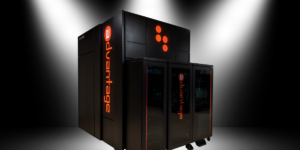
Senior aerospace and mechanical engineering students attend the 2017 AIAA regional Student Paper Conference. Photo courtesy of AIAA
The air intake of a Formula race car. A six-axis special effects motion stage. The airfoil of a solar-powered Mars aircraft.
Those are just some of the projects developed by this year’s graduating class of aerospace and mechanical engineers, and those don’t even include the winners of the American Institute of Aeronautics and Astronautics (AIAA) regional Student Paper Conference held in March.
As part of the Department of Aerospace and Mechanical Engineering’s (AME) Fall undergraduate senior projects course, AME 441, taught by lecturers Matthew Gilpin, Tyler Davis and Wilson Chan, students go through the entire research and development process. They are required to propose, construct and test a project of their choosing from the fields of aerospace, mechanical or astronautical engineering.
Only a handful of the year’s best projects are submitted to the annual AIAA regional Student Paper Conference, where college students from the western U.S. are invited to present their research and compete for best technical paper.
At this year’s event in San Jose, Calif., AME students took home both first and third place in the “Team” category.
The first-place team, winning $500, included Henry Miskaryan, David Freeman and Andrew Lindo. They will go on to present their paper at the AIAA Foundation International Student Conference held at the SciTech Forum in January 2018 in Kissimmee, Fla.
For their project, titled Design of a Paddle-Driven Wave Generator, they designed and fabricated a paddle-driven wave generator for Assistant Professor Mitul Luhar’s water channel laboratory, equipped with a closed-loop feedback system to control the wave frequency. Luhar provided the team with guidance as well as access to his research facility.
Taking home third-place and $250 was Matthew Johnson, Gabriela Mendoza, Sifat Syed and Lucas Kinan. Their project, titled Reduction of Semi-Truck Aerodynamic Drag, included the redesign of a semi-truck. They evaluated their novel design by measuring drag on a scale-model semi-truck using the AME department’s undergraduate wind tunnel and performed a computational fluid dynamics analysis to compare the measurements from their small-scale model to a full-scale road condition.
“The intent of these projects is for students to encounter and address engineering challenges they will face once they leave USC and give them experience in manufacturing, configuration, procurement and data analysis,” said Gilpin.
Published on April 27th, 2017
Last updated on April 27th, 2017













